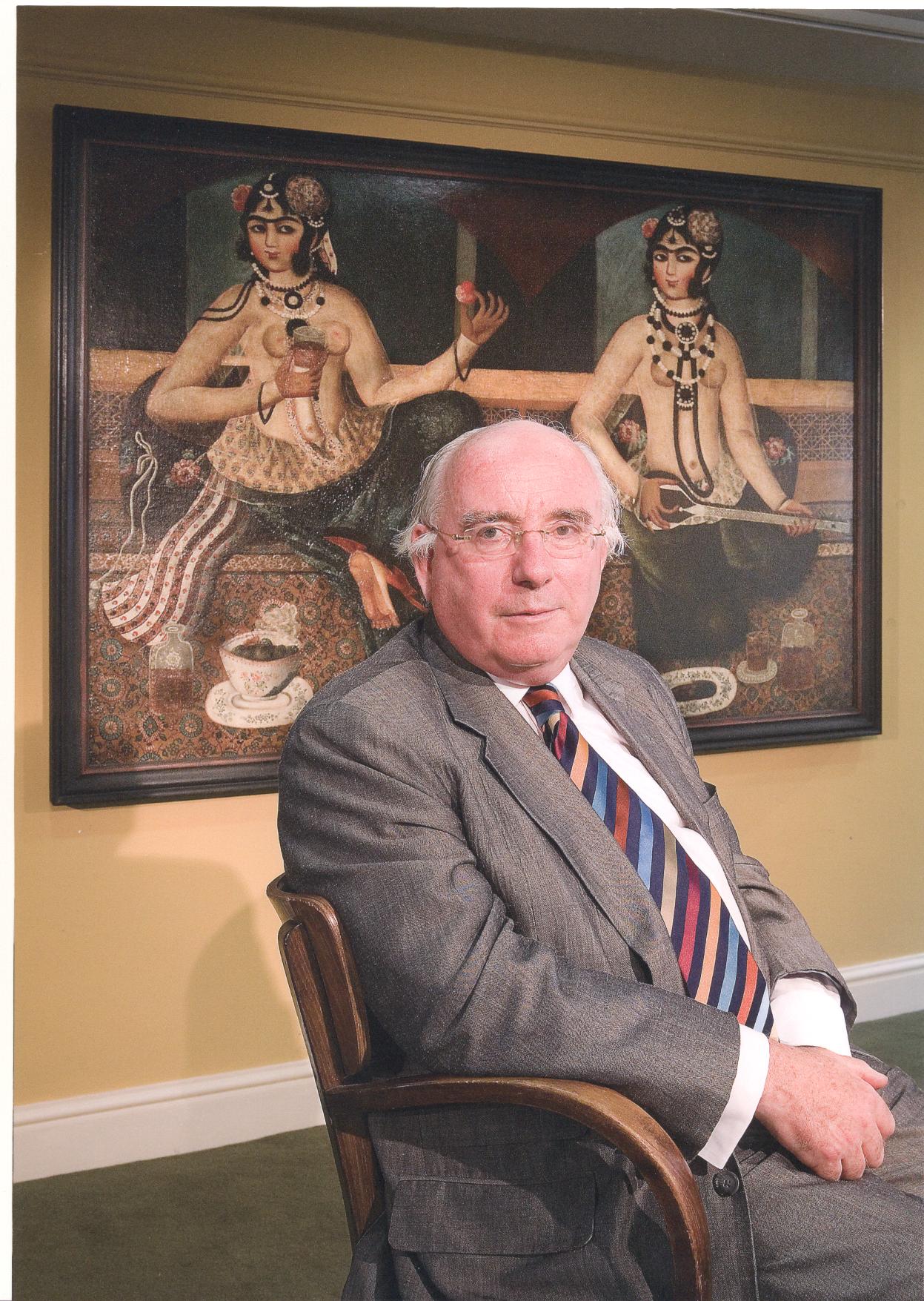
Robinson, currently at Royal Holloway, London, coursed through almost four centuries of South Asian history that witnessed the rise and fall of Persian influence on different aspects of South Asian life, particularly on its languages and religions.
“There has been a constant exchange between Iran and South Asia for thousands of years,” Robinson began. “South Asia gave the Sassanians [a pre-Islamic empire based in Iran] chess and Tantra, while Sassanians ruled over South Asia’s north-western parts.” With the advent of Islam, and frequent military incursions across South Asia’s western frontiers, cultural transactions were only to increase.
Explaining the spread of Persian, Robinson mentioned Firdousi. The author of the Shahnamah was a poet of Mahmud of Ghaznavi’s court, who brought Persian literary influence throughout the plains of the Punjab. After rise of the Sultanate of Delhi, this literary influence spread further East, all the way through Bengal.
Robinson’s lecture focused specifically on the Mughal era - from Babar through the 19th century, which is when Robinson claimed Persian influence declined. Robinson implied that the Persian language in particular relied on state patronage to flourish. It was under Akbar that the official position of a ‘poet laureate’ was created. “Akbar,” Robinson said, “patronised a total of 168 Iranian poets.” Persian then became the official language at every level of Mughal administration, and remained so until the British dismantled and rebuilt India’s administrative bureaucracy in the 19th century.
Whether through artistic merit, or simply through marrying the right people, Iran extended its people and practices in a culturally fertile South Asia. Robinson told the story of Mirza Ghias Baig, a Persian immigrant who rose to become a vazir in Jahangir’s administration, and whose daughter, Nur Jehan, married Mughal emperor Jahangir. Persian influence, through architecture and blood, eventually manifested itself in one of the most iconic buildings in the world - the Taj Mahal.
Another powerful influence has been Iran’s religious influence. “Sufism - Islamic mysticism - is no less than a projection of Iranian cultural power in the subcontinent,” Robinson said. Through reforms and new scholarship, Iranian pedagogy made its way to the seminaries of North India. Along with the Sufi order of Chishti, Iran can also be accredited for the spread of Shia Islam in South Asia, particularly in the Oudh region of North India.
In 1768, Shia congregational prayers took place for the first time. By the end of the 19th century, 2,000 imambargahs were built in Lucknow alone.
The decline came, Robinson explained, under British rule. South Asian elites realised that knowledge of Persian didn’t have the utility it once did so they switched to English. Nationalist and religious politics didn’t leave anything untainted, including languages. First Urdu replaced Persian, and subsequently became known as the ‘Muslim’ language.
Inevitably, the questions the audience had related to Pakistan’s present predicaments rather than those of the past. Sheema Kirmani asked about how and where dance and music was lost from the Sufi orders, and another audience member asked about Wahabi influences now prevalent in Pakistan. Sometimes it takes historians, not politicians, to remind us where we come from.
Published in The Express Tribune, April 11th, 2014.
COMMENTS (4)
Comments are moderated and generally will be posted if they are on-topic and not abusive.
For more information, please see our Comments FAQ
1725443747-0/Untitled-design-(5)1725443747-0-405x300.webp)


1724238420-0/Untitled-design-(3)1724238420-0-165x106.webp)












Pakistanis are mixed. There are few descended from native tribes. Few from invading tribes. Few from mixtures between the two. Invasions have been historically from Persia, Arabia, and Central Asia, so it is not unnatural to think our society as being a mix. We should be proud of this mix and celebrate it just like Urdu is a mixed language.
"Sometimes it takes historians, not politicians, to remind us where we come from."
Pakistanis dont come from "Persia", they are native to South Asia but have been culturally and psychologically dominated by foreigners throughout history. This is due to the caste system and the weakness of local cultures in northwest parts of South Asia.
Old Persian and Sanskrit are sister languages. Historically Iranians also the people most closest to South Asians so it is no surprise there has been cultural interchange over thousands of years. This is despite the firm belief held by many of our countrymen that we are descended from Arabian peninsula.
The Persian relation with south Asia goes further back in history.
Parsi and Vedic cultures have same origin. Persia at one time was part of 7 Satrpa system. 4 Satrps were in India. Persian Satrapa at one time was Maha Satrapa ( Great). Under them Rome was invaded twice. Indian soldiers of Indian Satrpas were part of this invasion.